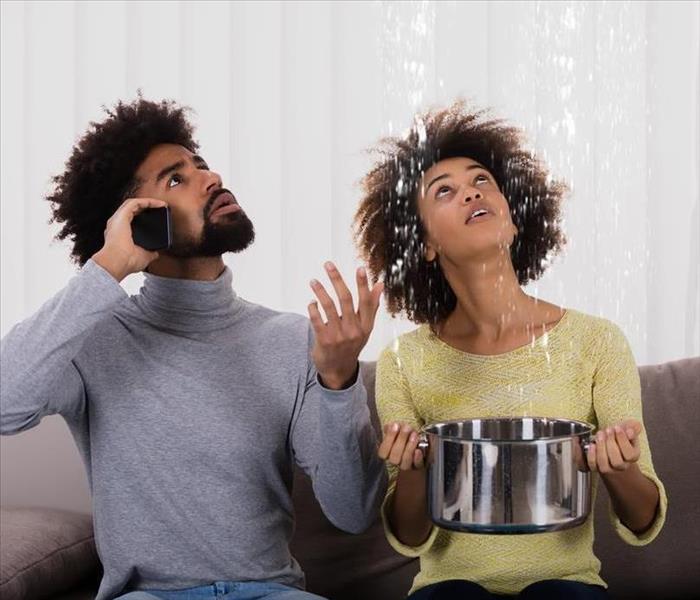What You Should Know About Water Damage
6/13/2022 (Permalink)
Water damage involves apparent (and not-so-apparent) destruction that comes from the presence of water in places that it shouldn’t be, especially for an extended length of time.
Damage can range from something as minor as a leaky water line to a refrigerator to something more catastrophic such as flooring or sewage backup.
Unattended water issues can impact building materials, compromising the structural integrity of your home. Water also creates the right environment for the growth and spread of mold. Cleaning up water quickly is an important part of taking care of your home.
Categorizing Water Damage
Damage from water falls into three categories, based on the source and severity of contamination:
Category 1:
The least severe category of damage, this water usually comes from broken pipes or overflow of a sink. Category 1 water is free of toxins and sewage, and usually the places impacted are also clean. Sometimes this water is called clean water.
Category 2:
Water in this category probably contains some contaminants and should be cleaned as quickly as possible. Also known as grey water, this damage usually comes from toilets (without feces), sump pump backups, and discharge from appliances such as dishwashers and washing machines that clean dirty objects. Clean water that has been standing around for more than 48 hours can become category 2 water.
Category 3:
Also known as black water, this category includes water that is severely contaminated with bacteria, fungi, and other microbes. Category 3 water sources include toilets containing feces, groundwater, outside flooding, and sewage backup among others.
Grey water that hasn’t been removed or cleaned in 48 hours should be handled as black water.
While clean water can usually be safely handled through drying, different types of water damage require approaches. Because this damage can lead to severe problems, it’s important to reach out to your nearest SERVPRO franchise in Salt Lake City, UT to professionally clean and remediate damage in any category.
Understanding the Cleanup Process
Generally, the water cleanup process should include the following steps, some of which should be left to the professionals:
- Shut off the water: Before you do anything else, make sure to stop the flow of water when applicable. Turn off the main supply to your home before proceeding further.
- Turn off the power: Electric and electronic items may be affected by water damage. It may not be safe to unplug items, so cut off the electric supply to affected areas using your breaker box.
- Check for mold: Mold may be visible on some surfaces. You may also detect a musty order. Because mold can grow and spread under floors, behind walls, and in ceilings, your professional damage restoration provider is equipped to remove structural elements to assess the extent of the spread.
- Remove the water: Remove excess water with buckets, vacs, or through drying, where possible.
- Remove damaged objects: Water-soaked carpet, drywall, insulation, and other materials should be physically removed.
- Disinfect and sanitize: Grey and black water involve contaminants that should be thoroughly cleaned.
Water damage is serious business at your home in Salt Lake City, UT. The longer it’s left unaddressed, the bigger your problem. Reach out to the professionals who are equipped to return your home to pre-damage conditions with special approaches to cleaning, drying, repair, and reconstruction.





 24/7 Emergency Service
24/7 Emergency Service
